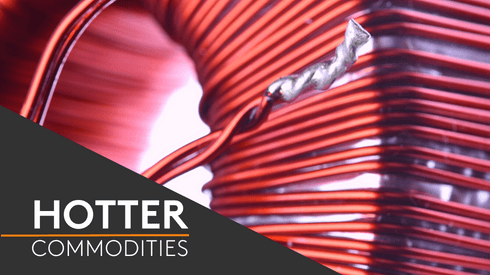Price forecasts for base metals are becoming harder to make and are not a market driving force, as short term volatility continues to overshadow trading movements, Edward Meir, senior commodity analyst at INTL FCStone, told Metal Bulletin.
“I think events have shown just how unpredictable things are. It all comes down to what your assumptions are. You can make a case that we will have another move down, or that we’ve turned the corner. An outright number doesn’t mean anything,” he said.
He was speaking to Metal Bulletin after he picked up his Apex award for calling base metal prices with 95.8% accuracy in 2011.
“Another unknown will be what happens in China. The question is will they have a hard landing, or not?”
Without being able to predict a firm outcome in China, in other words, forecasts can have little sway over market shifts.
Base metals data does not show that the Chinese economy is weakening significantly, Meir said, as copper, aluminium and nickel import demand remains strong.
“We don’t yet know how the market there will take a slowdown in the economy. The problems are not going to be solved just by lowering interest rates,” Meir said.
“They have to go through their version of the business cycle, and they’re going to see setbacks.”
Though analysts’ forecasts do not drive or define the market, participants still look for some outside opinion before making a move.
The credibility of the forecast, moreover, depends on who is writing it and for whom, according to Meir.
“Our clients are hedge fund portfolio managers and commercial hedge funds and speculators – they need to make decisions every day,” Meir said.
“We tell them what we think is going on in order to help them make better informed decisions. We give all the variables that are important so they can make their own minds up. We give them our opinion – they don’t have to agree,” he added.
Because supply and demand fundamentals have been pushed down the agenda, he said, it is now all the more difficult to make a worthwhile forecast.
In Meir’s own opinion, copper prices will continue to perform well during 2012, and could rise above $9,000 per tonne.
“Supply remains very tight. The cost of production is very low, but we’re not seeing the supply come out in large quantities,” he said.
“Ore grades are deteriorating, but there are production issues, such as a lack of labour. Copper prices will be pretty good.”
Aluminium prices, meanwhile, might not perform as well during the year, as high inventories continue to overhang the market.
“There’s a lot of useable and available material, given the right circumstances. There’s good support around $2,000 per tonne, but anything above about $2,400 will be hard,” Meir said.
Tin, which took a hammering in 2011, could rebound this year, as stocks dip ever lower, and the market continues to depend heavily on supply from Indonesia.
The soldering metal is expected to see some upside, Meir said, but is not likely to “go screaming higher”.
“I think base metals are going to trade within their current ranges, given their own dynamics, but they will mostly move together,” he added.
“One of them could speed up or down, but it would quickly correct, and join the rest of the group. The whole commodities space is moving together.”
This is unusual, he said, and is caused by market participants who adjust their portfolios based on movements in just one commodity.
“It feeds on itself. There’s so much fund money sloshing around, and commodities have become an investment tool. There’s more volatility, but a reasonable chance to make some money,” Meir said.
For 2011, meanwhile, he conceded that his favoured pick among base metals had turned out to be the worst performer on the London Metal Exchange.
“I do have some egg on my face. I picked tin and it was the worst. We thought it would do well, but we quickly adjusted our numbers at the beginning of the second quarter,” he said.
Claire Hack
chack@metalbulletin.com
Twitter: @clairehack_mb





